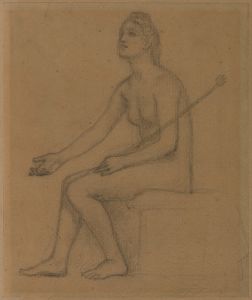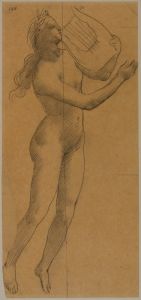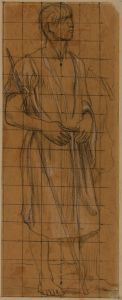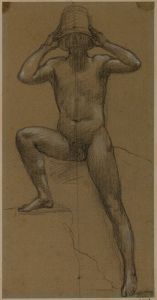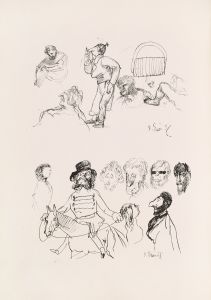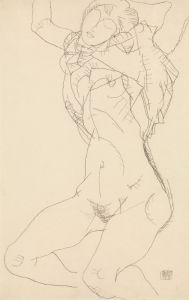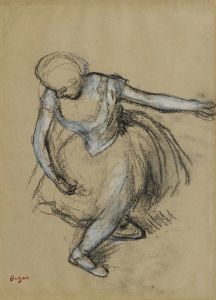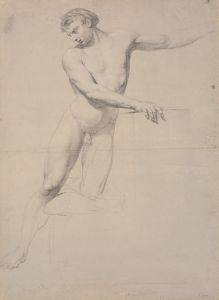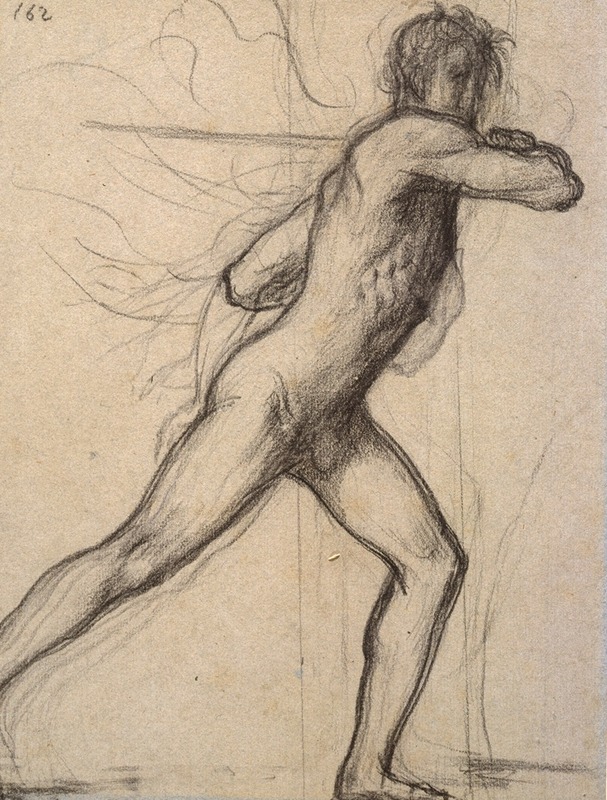
Homme brandissant un sabre
A hand-painted replica of Pierre Puvis de Chavannes’s masterpiece Homme brandissant un sabre, meticulously crafted by professional artists to capture the true essence of the original. Each piece is created with museum-quality canvas and rare mineral pigments, carefully painted by experienced artists with delicate brushstrokes and rich, layered colors to perfectly recreate the texture of the original artwork. Unlike machine-printed reproductions, this hand-painted version brings the painting to life, infused with the artist’s emotions and skill in every stroke. Whether for personal collection or home decoration, it instantly elevates the artistic atmosphere of any space.
Pierre Puvis de Chavannes was a notable French painter, recognized for his significant contributions to the Symbolist movement in the 19th century. One of his works, "Homme brandissant un sabre" (Man Brandishing a Saber), exemplifies his unique artistic style and thematic focus.
Pierre Puvis de Chavannes was born on December 14, 1824, in Lyon, France. He initially pursued a career in engineering, but after a serious illness, he decided to devote himself to painting. He studied under various artists, including Eugène Delacroix and Thomas Couture, which influenced his early works. However, Puvis de Chavannes developed a distinctive style characterized by its simplicity, muted color palette, and classical composition.
"Homme brandissant un sabre" is a compelling example of Puvis de Chavannes' work. The painting depicts a man holding a saber aloft, a pose that conveys a sense of strength and determination. The figure is rendered with a sense of timelessness, a common trait in Puvis de Chavannes' paintings, which often blend classical themes with contemporary subjects. The background is typically sparse, focusing the viewer's attention on the central figure and enhancing the dramatic effect of the pose.
Puvis de Chavannes was known for his large-scale murals and allegorical paintings, many of which adorn public buildings in France. His work often explored themes of heroism, patriotism, and the human condition, reflecting the social and political climate of his time. "Homme brandissant un sabre" fits within this context, as it can be interpreted as a symbol of resistance and resilience.
The artist's approach to composition and color in "Homme brandissant un sabre" is indicative of his broader oeuvre. Puvis de Chavannes favored a restrained palette, often using earthy tones and soft pastels to create a harmonious and contemplative atmosphere. His figures are typically idealized, with an emphasis on form and gesture rather than intricate detail. This stylistic choice lends a sense of universality and timelessness to his work, allowing viewers to engage with the underlying themes on a deeper level.
Puvis de Chavannes' influence extended beyond his lifetime, impacting subsequent generations of artists. His emphasis on symbolic content and simplified forms resonated with the Symbolist movement and later with modernist painters. His murals, in particular, set a precedent for public art, demonstrating how painting could enhance and elevate public spaces.
Despite his significant contributions to art, Puvis de Chavannes remained somewhat of an enigmatic figure. He was not as widely celebrated as some of his contemporaries during his lifetime, but his work has since gained recognition for its innovative approach and enduring impact. "Homme brandissant un sabre" is a testament to his ability to convey powerful themes through a minimalist yet evocative style.
In summary, "Homme brandissant un sabre" by Pierre Puvis de Chavannes is a notable work that reflects the artist's distinctive style and thematic focus. Through its depiction of a man brandishing a saber, the painting encapsulates themes of strength and resilience, rendered in a timeless and contemplative manner. Puvis de Chavannes' legacy as a pioneer of Symbolism and a master of mural painting continues to be appreciated by art historians and enthusiasts alike.








